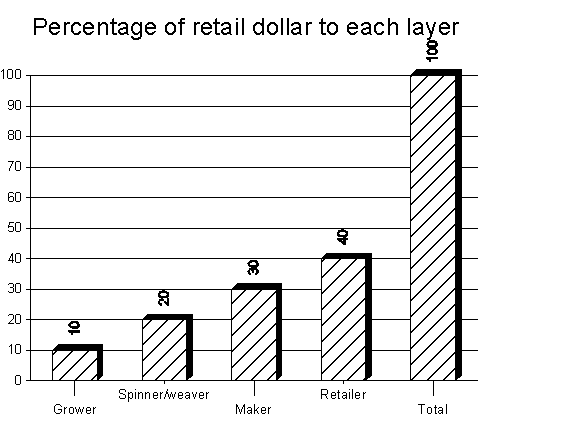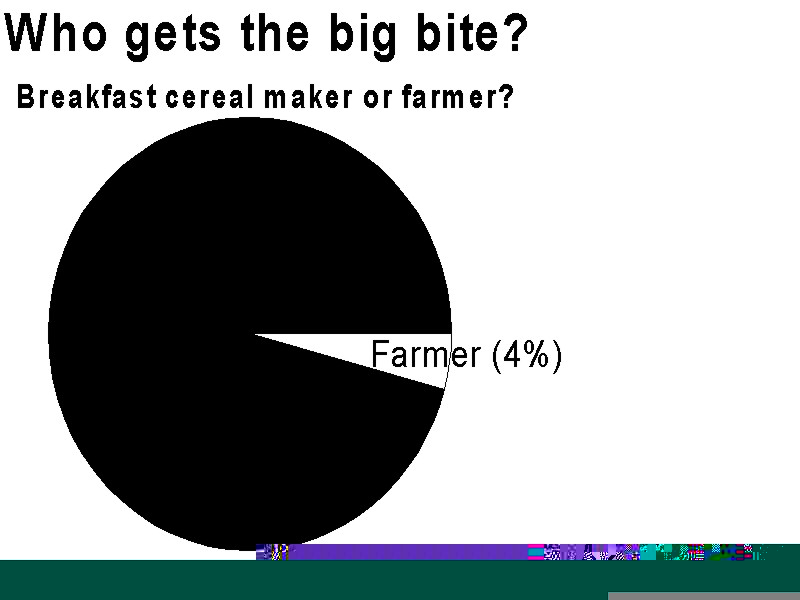| Home | What this means | Using this | Taking this further | Summary |
| Go to the
home page:
OrganicExchange.com.au for more grazing & farming info you
can walk out & use Site conditions No body represents this as: free from omissions free from errors suitable for your use nor as advice. Your situation is different from anyone else's. Make informed decisions and if necessary get advice |
| Home | Using this | Taking this further | Summary |
 This includes clothes made from cotton,
wool, cashmere, linen or hemp: A $100 item of clothing typically returns $40 to
the retailer, $30 to the maker and wholesaler, $20 to the fabric maker and $10
for the raw materials. See the chart at right.
This includes clothes made from cotton,
wool, cashmere, linen or hemp: A $100 item of clothing typically returns $40 to
the retailer, $30 to the maker and wholesaler, $20 to the fabric maker and $10
for the raw materials. See the chart at right.  The chart at left shows the picture for one breakfast cereal.
The chart at left shows the picture for one breakfast cereal.
| So a 1 kg box of this cereal is made from | |||
| These ingredients | bought by the | and used at a rate per box of cereal of | and at a cost per kg of cereal |
| Water | Megalitre | 30 g = 30 ml = about 1 ounce maximum | maximum 1 cent |
| Vitamins | 50 kilogram drum (110 pounds - 1 hundredweight) | Traces only | maximum 2 cents |
| Wheat - makes up 97% of the cereal | Hundreds or thousands of tonnes | Almost 1 kg (970 g or about 2 pounds) | less than 16 cents |
| Packaging | Truckload | A plastic bag in a box | less than 1 cent |
| Total cost of all ingredients used by the manufacturer of the cereal: | Around 20 cents | ||
| Sale price of 1 kg of cereal in a plastic bag in a box to the consumer | $4.00 | ||
| Markup by all stages of
production and distribution. Note that this includes all costs once the wheat has left the farm. The various stages (including manufacture, transport, warehousing and retailing) can take their profits from the 380 cents of "Gross profit". From the 20 cents cost for all ingredients to the 400 cents ($4) sale price for the box of cereal is a markup of around 2,000 per cent | From
20 cents to 400 cents = a markup of 2000% | ||
| Home | Top | What this means | Taking this further | Summary |
Why ship beef when you can sell dinner? |
| Home | Top | What this means | Using this | Summary |
| Home | Top | What this means | Using this | Taking this further |